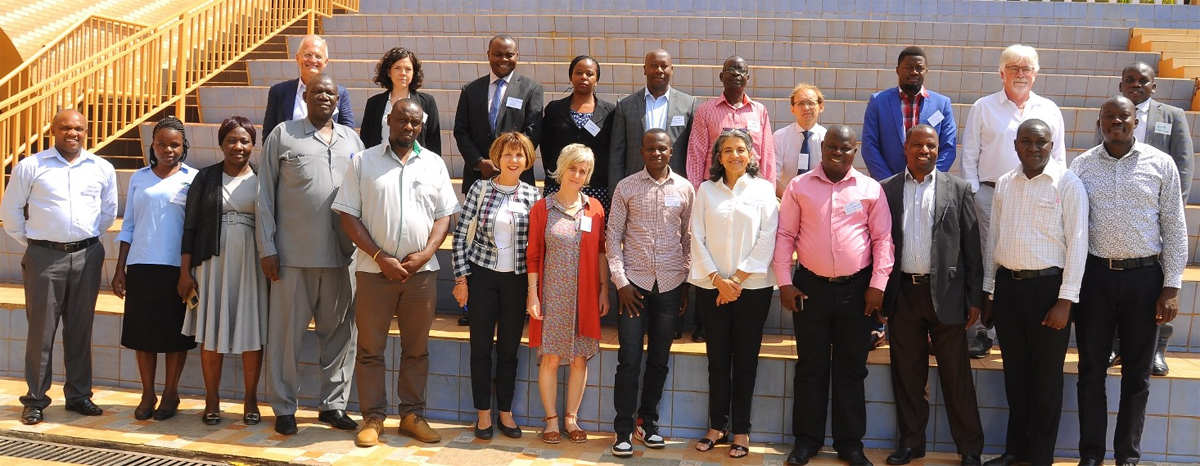
New project will increase the availability of seed from hundreds of useful indigenous trees
By Cathy Watson
In 2016, Uganda committed to restoring 2.5 million hectares by 2030 in its forest landscape restoration pledge to the Bonn Challenge and AFR100, including planting about 40 million trees per year.
But, as in many countries, restoration and tree planting drives are proceeding with scant thoughts of seed. Across Sub-Saharan Africa (SSA), native tree seed in particular – in the diversity, quality and quantity needed to meet these targets – is decidedly lacking.
This represents a major bottleneck for countries seeking to meet their Nationally Determined Contributions to the Paris Agreement on Climate Change, their Land Degradation Neutrality targets under the UN Convention to Combat Desertification, the Sustainable Development Goals, and their National Biodiversity Strategies and Action Plans under the UN Convention on Biological Diversity.
On 31 January in Kampala, teams from the Center for International Forestry Research and World Agroforestry (CIFOR-ICRAF), Botanic Gardens Conservation International, and forestry company Unique met with senior foresters in the Ugandan government to progress a new project, ‘Supplying high-quality tree planting material of native tree species for landscape restoration in Sub-Saharan Africa.’ Funded by Germany’s International Climate Initiative, the project aims to enable Ethiopia, Kenya, Uganda, Rwanda, and Burkina Faso to establish a sustained supply of native tree seed for their forest landscape restoration and tree planting targets. One of its approaches will be performance-based contracts with landholders to establish native breeding seed orchards that will provide quality seed that they can sell.
“Uganda has been extremely successful in commercial forestry. Plantations of exotics have increased tree cover from 9% in 2015 to 13.5% today,” said CIFOR-ICRAF scientist Lars Graudal, during his opening remarks at the event. He stressed, however, the need for the country to attend to its native species, too. “Native species fill critical ecological, social, and economic roles, and because of the destruction of their habitats, it is urgent to get them conserved and into use. This project will use a low-input approach where you mobilise the genetic resource, collect seed from where it is still present and bring it together in orchards.”

“Uganda has 854 indigenous tree species, of which 55 are threatened,” said project co-lead and CIFOR-ICRAF tree geneticist Ramni Jamnadass. “Through species prioritisation with stakeholders, we expect to arrive at a list of about 120. From these will emerge what we call Climate Appropriate Portfolios of Tree Diversity of 10-20 trees per functional use and agroecological region.” She shared CIFOR-ICRAF research showing that alterations in environmental conditions caused by climate change will affect where tree species can grow – a sobering fact that needs to be considered so that the right species are chosen. “We need both genetic diversity and the right species for the future climate,” she said.
Martin Asiimwe, who runs the World Bank project ‘Investing in Forests and Protected Areas for Climate Smart Development‘ at Uganda’s Ministry of Water and Environment, offered ideas about landscapes and organisations to target during the project. “Native species suit the spiritual nature of churches, and dioceses have big land. If the project can establish a foothold in places of prayer and institutions like kingdoms, followers will adopt growing of native species.”

The group gave repeated feedback, however, that promoting Indigenous species is a challenging and non-trivial matter. Issa Katwesigwe – Acting Assistant Commissioner for Planning and Development in the Forestry Sector Support Department – said that “it all comes down to human nature. People are motivated by what’s in it for them. One constant thought is: ‘How do I earn from that tree?’” He asked: “How do we interest people in native trees with long rotations?”
Paul Jacovelli, Head of Unique’s Forest Investments Division – who ran Uganda’s successful Sawlog Production Grant Scheme – said that “we have to understand the demand. What we hear is ‘Farmers want eucalyptus and pine’. Our focus will be what species, where are they going to be planted, over how long.”

Joseph Ochwo of the National Tree Seed Center said there was a need for sensitisation. “Our seed sources are insecure. There is a high chance that if we identify an important germplasm source, we lose it. In Karamoja, we marked trees of Acacia senegal. The community thought we had hidden intentions and cut them down. I hope the designers of this project took that into consideration.”
Yet the majority of participants were optimistic about the project’s potential. Moreen Uwimbabazi of Uganda’s National Agricultural Research Organization said that the body has “institutes all over the country with safe and maintained land where we can have orchards.” Dennis Kavuma, general manager of the 700-strong Uganda Timber Growers Association, said that the project “brings to the fore what we have been telling our growers about native trees. We are commercial people with business minds, but we are also cognizant of [native trees’] environmental and social benefits.”
The project is also launching in other African nations, and seeks to create a pan-African tree seed platform; CIFOR-ICRAF welcomes new partners as the process continues.













